An Introduction to Japanese Herbs
Get to know four ancient wa-herb and how to enjoy them!
If you love rosemary and mint, read on to learn all about Japan’s indigenous herbs whose captivating aromas and tastes have been commonly used in Japanese cooking and traditional medicine. With shiso, yomogi, kuromoji and mitsuba in your pantry, you’ll have an all-natural arsenal to battle aches and pains and winter colds, all while indulging in aromatherapy!
Western herbs are well known for their health and relaxation benefits. Who among us hasn’t had a cup of peppermint tea to calm down, massaged in a lavender cream before bed or basked in the comforting aroma of rosemary-baked vegetables?
Japanese herbs, known as wa-herb in Japanese, are still relatively rare outside of the country despite their impressive soothing and medicinal properties. Generally, herbs are categorized as wa-herbs if they were in use before the Edo period. The four representative herbs profiled below are indigenous to the Japanese archipelago and have been used for centuries here for healing and calm. Read on to get in touch with Japan’s natural herbal remedies!
Shiso
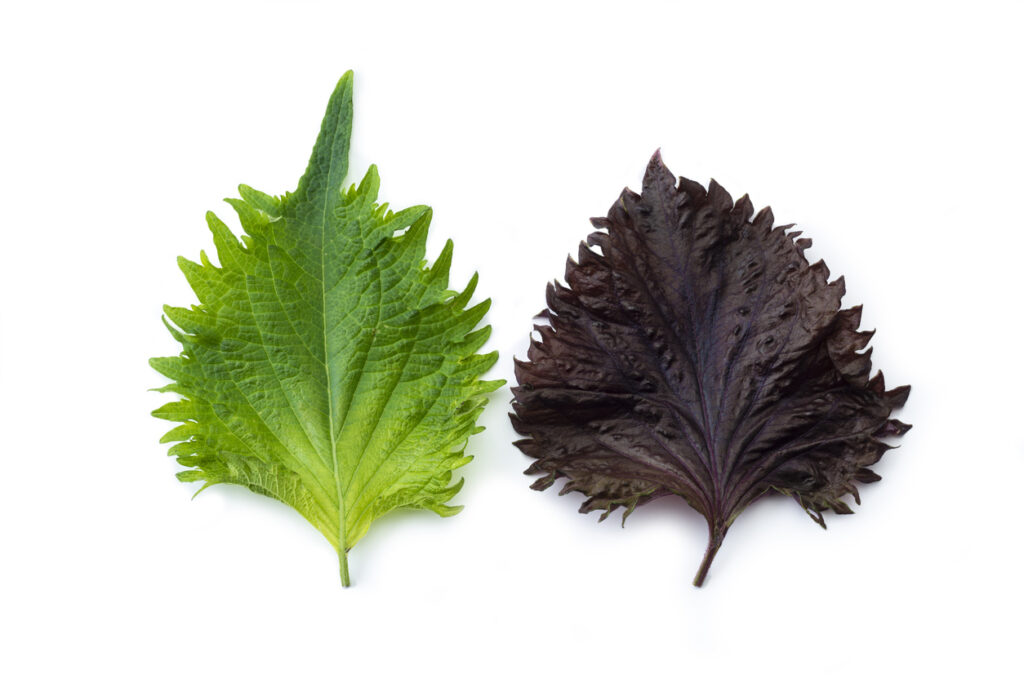 © Photo by iStock: pidjoe
© Photo by iStock: pidjoeShiso, or perilla leaf in English, is an herb with green and reddish-purple heart-shaped leaves with saw-toothed edges. It is an unfussy perennial plant that can be grown in a garden bed or planter. It is not only easy to care for, but will produce an abundance of leaves all summer long. If you don’t feel like growing it yourself, you can find it available year-round at your local supermarket. Here are some ideas on how to incorporate shiso into your daily life.
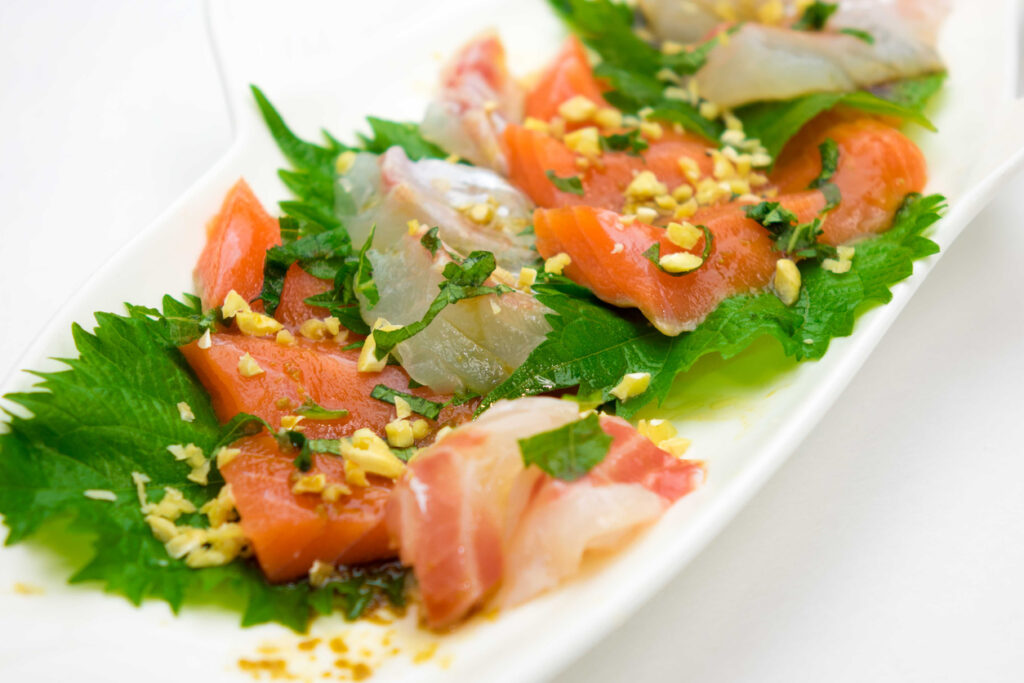 © Photo by iStock: istock-tonko
© Photo by iStock: istock-tonkoThis Japanese aromatic herb has a flavor reminiscent of cloves and cinnamon. Its unique taste and fragrance have led it to be regarded as the most beloved herb in Japanese cuisine. Shiso can be included in your everyday cooking, from flavoring tsukune (chicken meatballs) and udon, to making refreshing drinks during the summer, like shiso juice. Shiso is also well-known for its antibacterial properties which is why it was traditionally included along with sushi to prevent spoilage. In Japanese medicine as well, it is thought to help with digestion and as an antinauseant for morning sickness.
Yomogi
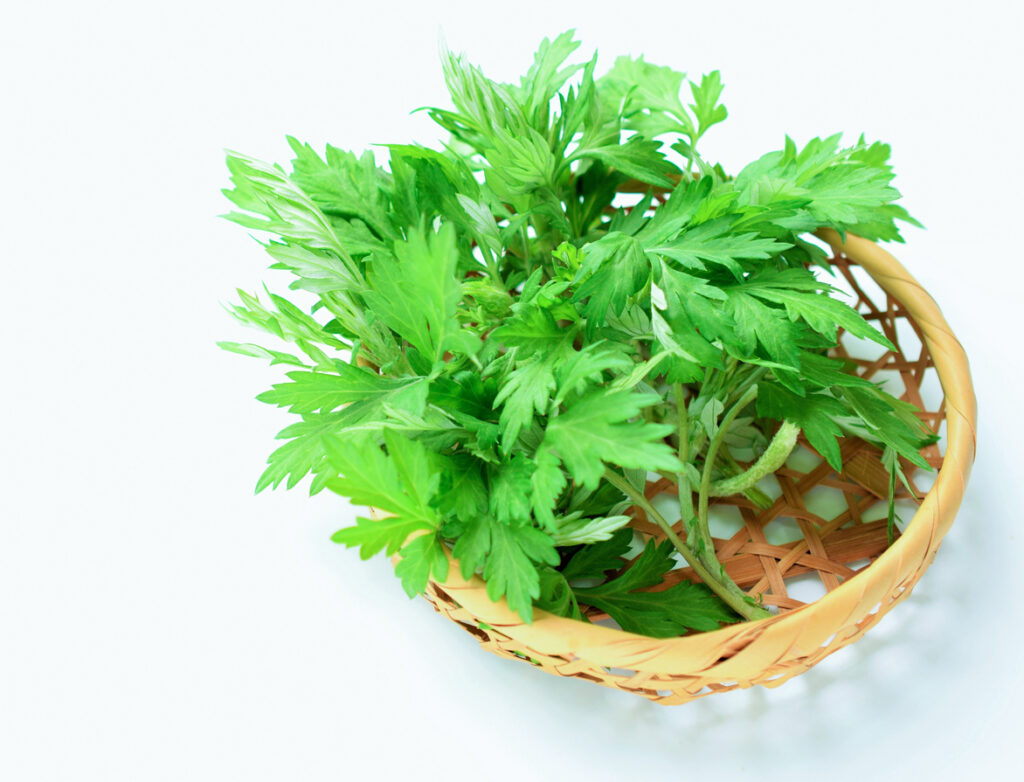 © Photo by iStock: syan
© Photo by iStock: syanAn especially hardy plant that can grow up to 1.2 meters tall, yomogi (Japanese mugwort) is part of the chrysanthemum family. Yomogi’s delicate scent is said to be representative of spring. As such, its aroma is refreshing and relaxing.
This herb can be enjoyed in a multitude of ways. For one, yomogi has many uses in traditional Japanese medicine. Full of Vitamin K, it is thought to play a role in improved coagulation and blood purification. Also due to its high dietary fiber content, yomogi has been used as a treatment for constipation while the chlorophyll in its green leaves can aid with lowering cholesterol. And, as an added benefit, yomogi added to bath water (like in bath salts) is considered good stress relief due to its warming properties and spring-like aroma.
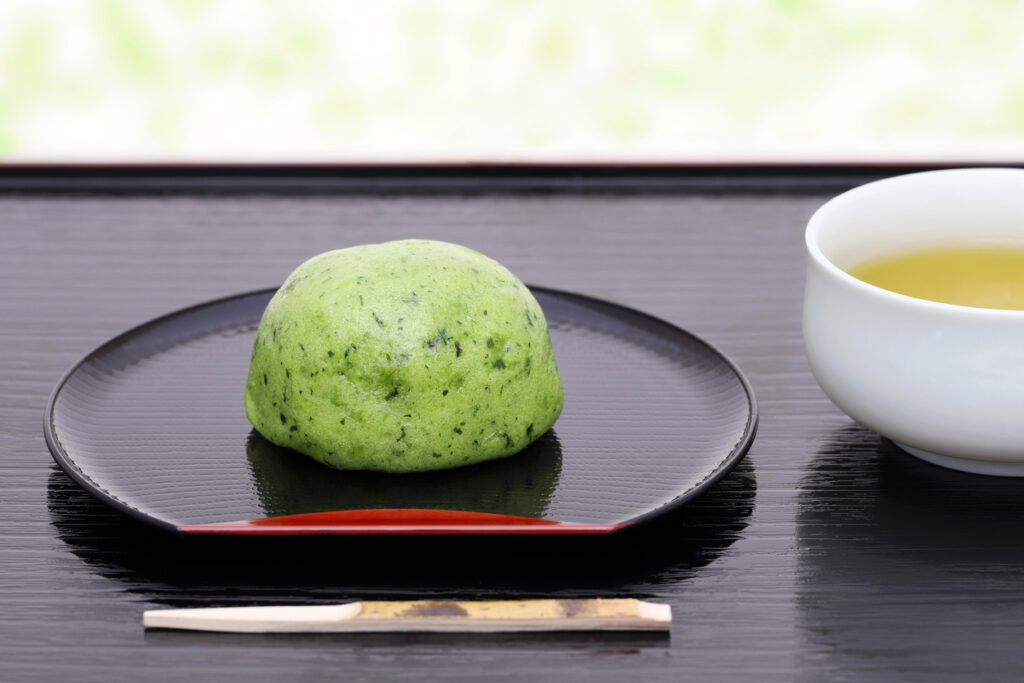 © Photo by iStock: akiyoko
© Photo by iStock: akiyokoAnother important use of this herb is in cooking. Yomogi has long been eaten in various wagashi (Japanese sweets), such as the popular kusamochi (rice flour dumplings with yomogi) which are distinctive in their vibrant green color. Dried yomogi leaves can also be roasted and made into tea with a delicate flavor.
Kuromoji
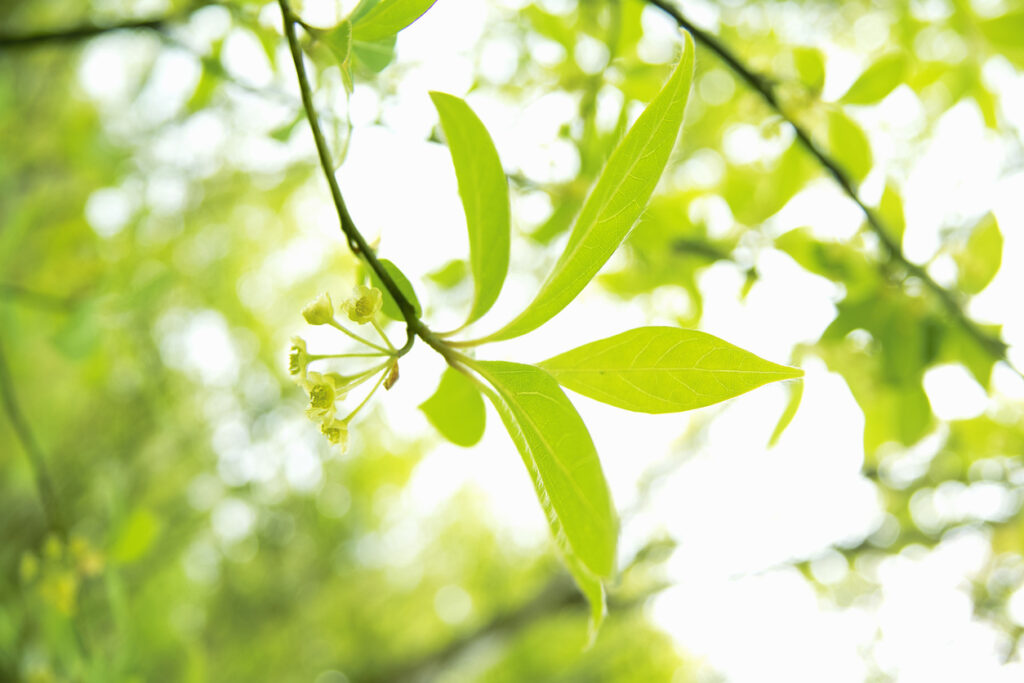 © Photo by iStock: gyro
© Photo by iStock: gyroA tree that grows indigenously in the mountains of Japan, Kuromoji (Spicebush) is an herb with many uses. Meaning “black letters” in Japanese, the pattern of the algae that often attached to the bright green-yellow stems of this plant reminded people of writing which gave the herb its name. In the spring, spicebush trees bloom with small yellow flowers and the fall brings round black berries to its branches. While the trees make for high-quality toothpicks, perhaps this herb’s most salient feature is its especially pleasing aroma.
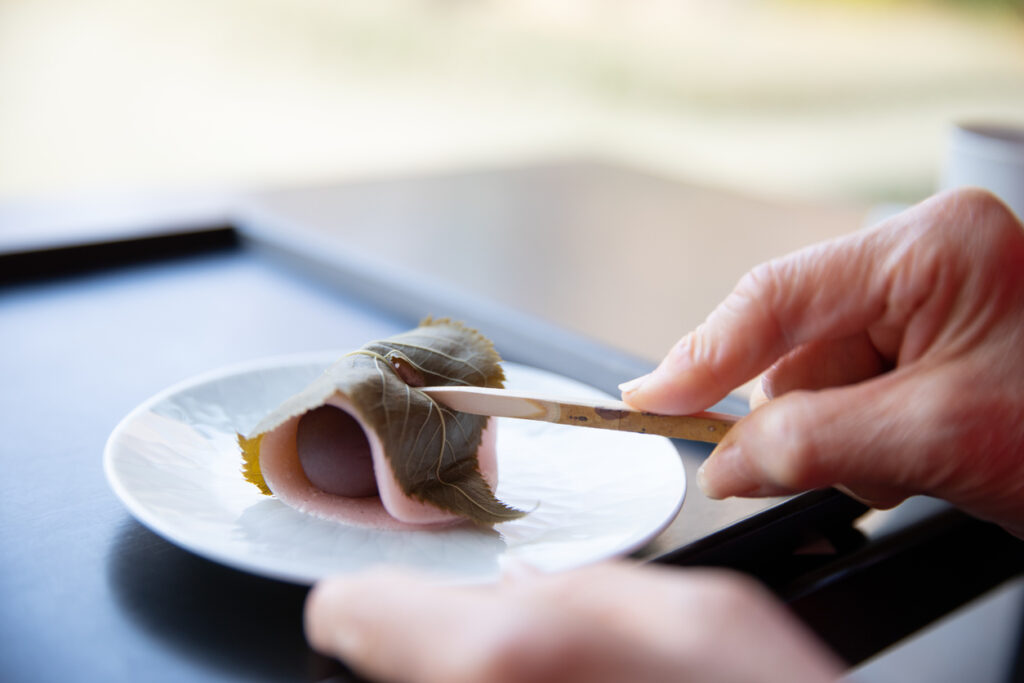 © Photo by iStock: kumikomini
© Photo by iStock: kumikominiHistorically, Kuromoji was added to soaps and perfumes in Japan for its lovely scent. The distinctive woody yet sweet scent is said to possess relaxing properties and can help lull you to sleep. As such, it is often used in bath salts which can double as a healing soak for stiff shoulders and aching joints. Similarly, kuromoji’s leaves can be made into an herbal tea which is said to calm the stomach and help with recovery from illness, especially during the cold winter months. It also was used in Japanese traditional medicine and for oral care due to its antiviral properties. In fact, Kuromoji extract has been shown in recent studies to reduce the proliferation of influenza and help alleviate joint and arthritic pain by warming the body.
Mitsuba
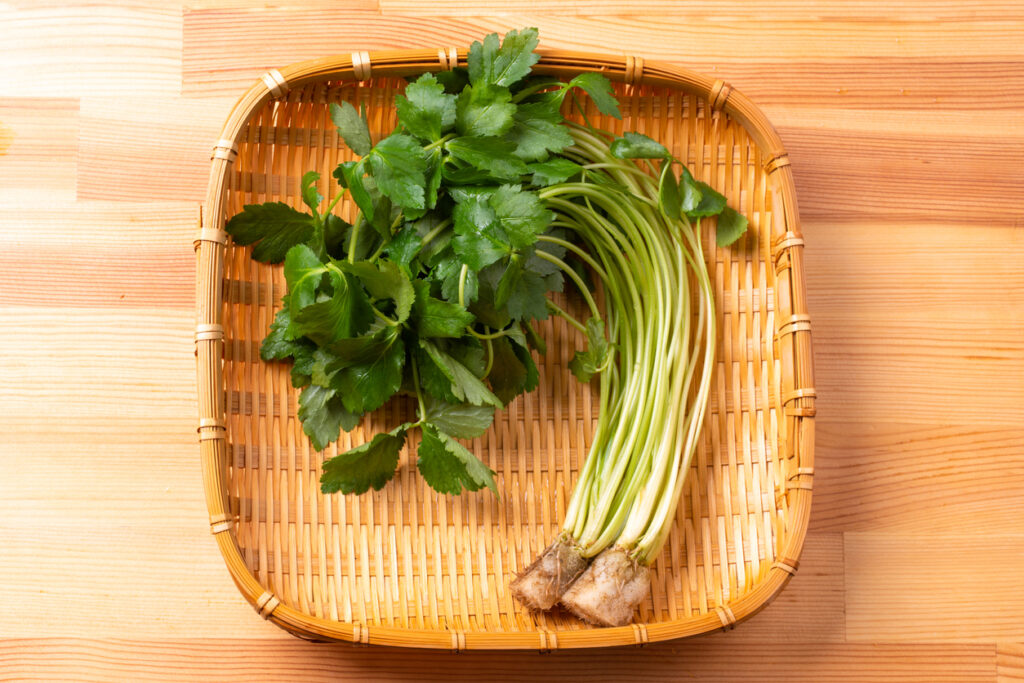 © Photo by iStock: Promo_Link
© Photo by iStock: Promo_LinkMitsuba (Japanese parsley), or literally “three leaves”, is an herb indigenous to Japan’s countryside. It grows throughout Japan although Chiba and Aichi prefectures are the leading cultivators. This herb is easy to grow from seed at home but prefers partial shade. When it’s grown in full sun, the leaves turn yellow and become bitter.
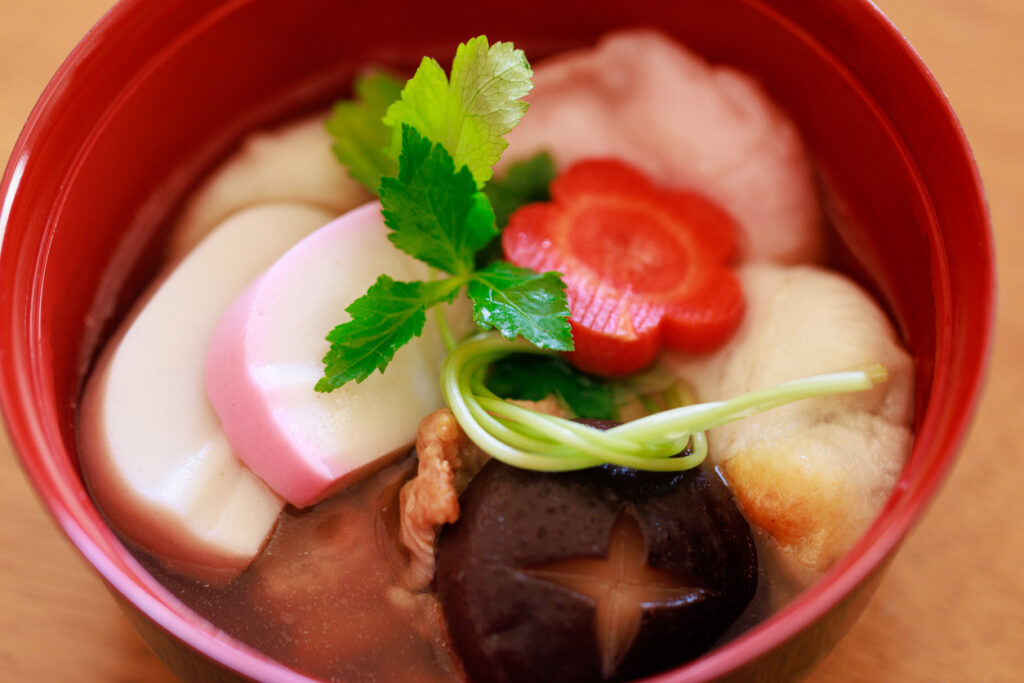 © Photo by iStock: Koichi Yoshii
© Photo by iStock: Koichi YoshiiMost often used in cooking, mitsuba is prized for its crispness and delicate refreshing flavor. In English, it has been described as tasting like a cross between parsley, cilantro and celery leaves. It also is thought to mean good luck and appears atop many Japanese celebration dishes, like New Year’s ozoni (rice dumpling soup) and Hina Matsuri’s osuimono (clear broth). Tied mitsuba stems also dress wedding dishes to bring a happy future to the new couple. It is usually used as a garnish, notably for chawanmushi (savory steamed egg custard) and donburi (protein of choice served over rice), since it turns bitter and loses its distinctive flavor when it is cooked. This herb has also been used medicinally. Indeed, in traditional Japanese medicine, mitsuba is said to decrease irritability and improve appetite and digestion. It is also thought to help control high blood pressure, relax muscles and help relieve high stress.
So, what better way to adapt your lifestyle to Japan’s unique geography and climate than to incorporate these traditional herbs? We’d love to hear your thoughts on these indigenous gems as well so leave a comment below!












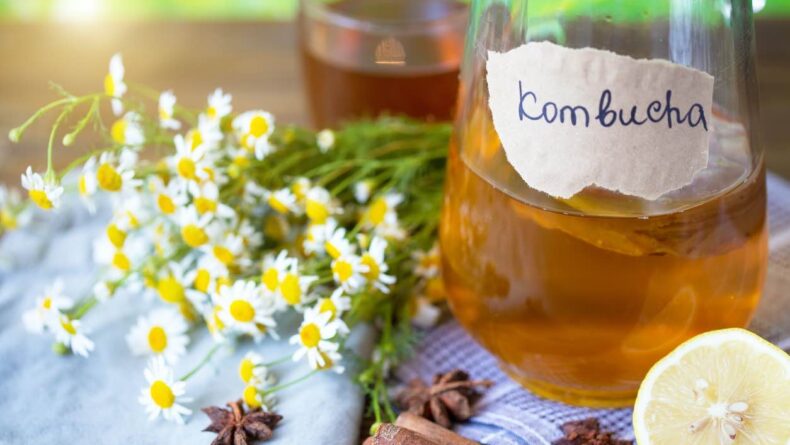
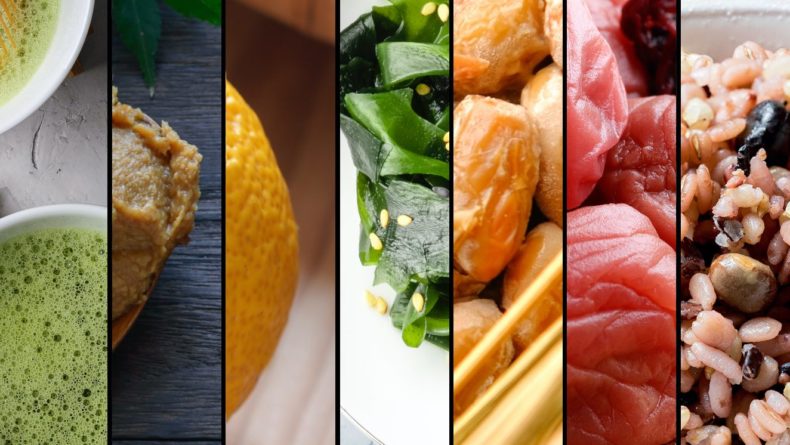

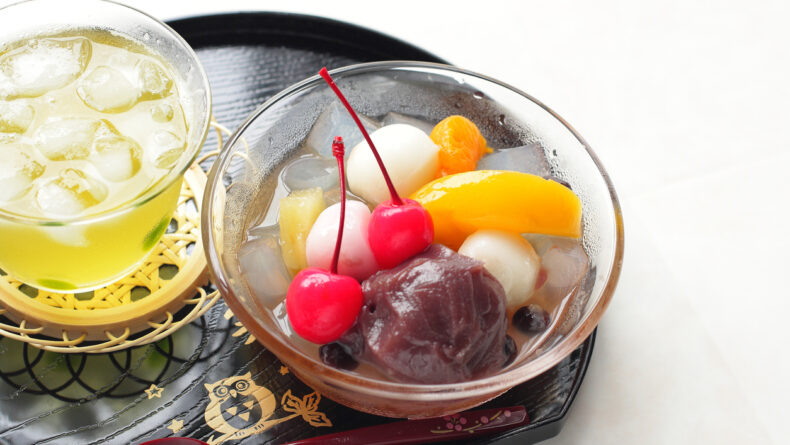
Leave a Reply